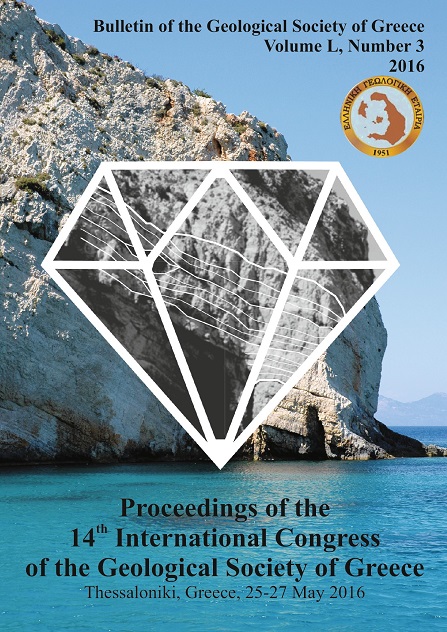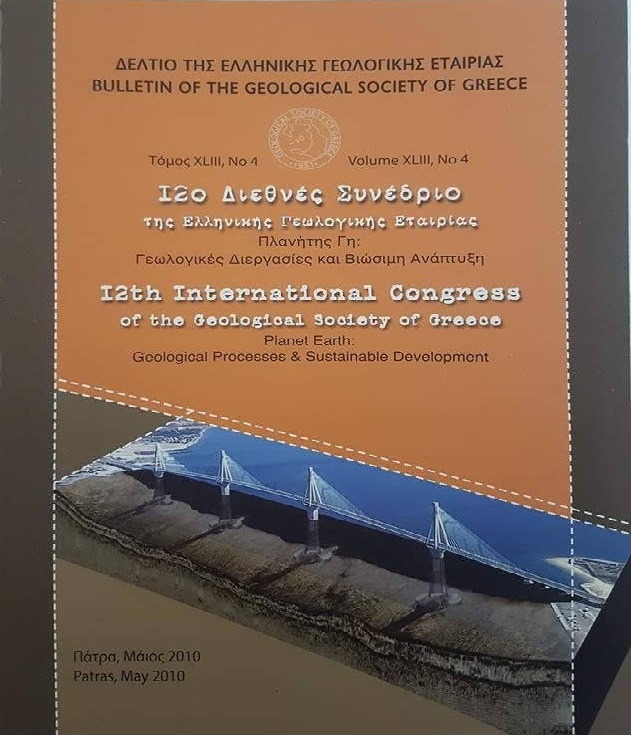SIGNIFICANT EARTHQUAKES NEAR THE CITY OF THESSALONIKI (NORTHERN GREECE) AND PROBABILITY DISTRIBUTION ON FAULTS

Περίληψη
Στόχος της παρούσας εργασίας είναι η εκτίμηση της χρονικά εξαρτώμενης πιθανότητας γένεσης ισχυρών σεισμών (M≥6.0) στα ενεργά ρήγματα γύρω από την πόλη της Θεσσαλονίκης, περιοχή που στο παρελθόν έχει πληγεί από αρκετούς κατατροφικούς σεισμούς με τελευταίο αυτόν του 1978. Με τη χρήση της μεθόδου υπολογισμού μακροσεισμικού επικέντρου και μεγέθους χρησιμοποιώντας μακροσεισμικές εντάσεις και από τις μακροσεισμικές περιγραφές παλαιότερων σεισμών με M≥6.0 που έγιναν στην περιοχή τα τελευταία 500 χρόνια καταβλήθηκε προσπάθεια επαναπροσδιορισμού των εστιακών παραμέτρων των ιστορικών σεισμών με σκοπό τον υπολογισμό μέσης περιόδου επανάληψης και του χρόνου από τον τελευταίο σεισμό σ’ ένα ρήγμα. Για να γίνει η εκτίμηση της πιθανότητας λήφθηκε υπόψη η μεταβολή της τάσης που προκύπτει μετά από κάθε ισχυρό σεισμό και η οποία έχει ως αποτέλεσμα να επιταχύνει ή να επιβραδύνει τη γένεση ενός επόμενου σεισμού. Ενσωματώθηκε έτσι στους υπολογισμούς της χρονικά εξαρτώμενης πιθανότητας, η μεταβολή της τάσης που προκλήθηκε από το σεισμό της 20 Ιουνίου 1978 με Μ=6.5. Η συνδυαστική πιθανότητα Poisson για τα επόμενα 30 χρόνια (2015-2045) βρέθηκε ίση με ~35%, η δεσμευμένη πιθανότητα εκτιμήθηκε από 0% έως 15% και από0% έως 20% με το συνδυασμό των τάσεων.
Λεπτομέρειες άρθρου
- Πώς να δημιουργήσετε Αναφορές
-
Paradisopoulou, P., Papadimitriou, E., & Mirek, J. (2016). SIGNIFICANT EARTHQUAKES NEAR THE CITY OF THESSALONIKI (NORTHERN GREECE) AND PROBABILITY DISTRIBUTION ON FAULTS. Δελτίο της Ελληνικής Γεωλογικής Εταιρείας, 50(3), 1389–1398. https://doi.org/10.12681/bgsg.11852
- Ενότητα
- Σεισμολογία

Αυτή η εργασία είναι αδειοδοτημένη υπό το CC Αναφορά Δημιουργού – Μη Εμπορική Χρήση 4.0.
Οι συγγραφείς θα πρέπει να είναι σύμφωνοι με τα παρακάτω: Οι συγγραφείς των άρθρων που δημοσιεύονται στο περιοδικό διατηρούν τα δικαιώματα πνευματικής ιδιοκτησίας επί των άρθρων τους, δίνοντας στο περιοδικό το δικαίωμα της πρώτης δημοσίευσης. Άρθρα που δημοσιεύονται στο περιοδικό διατίθενται με άδεια Creative Commons 4.0 Non Commercial και σύμφωνα με την οποία μπορούν να χρησιμοποιούνται ελεύθερα, με αναφορά στο/στη συγγραφέα και στην πρώτη δημοσίευση για μη κερδοσκοπικούς σκοπούς. Οι συγγραφείς μπορούν να: Μοιραστούν — αντιγράψουν και αναδιανέμουν το υλικό με κάθε μέσο και τρόπο, Προσαρμόσουν — αναμείξουν, τροποποιήσουν και δημιουργήσουν πάνω στο υλικό.




